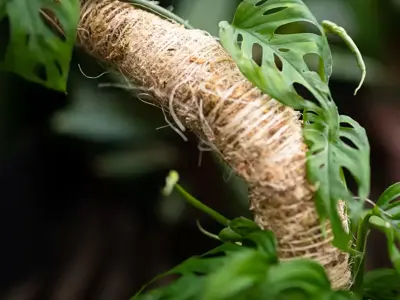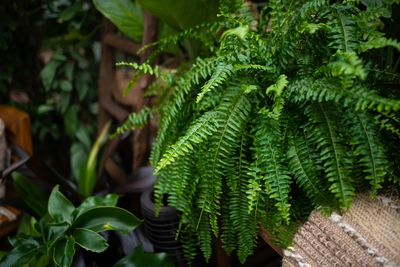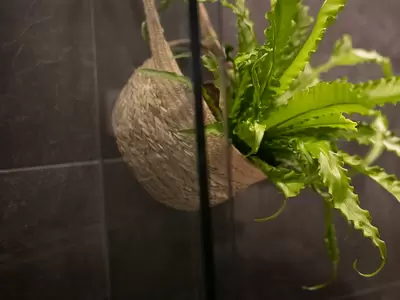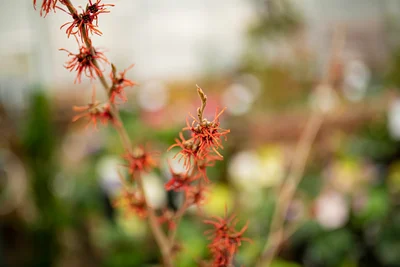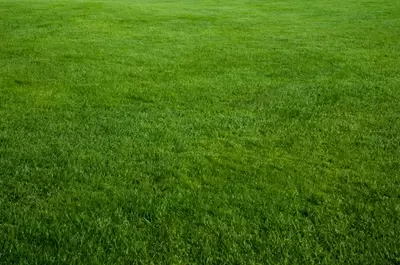
Written by Peter Fitzmaurice
Contributions by Scott Austin and Ingrid Hoff
Everyone envies a healthy green lawn and having your own is not as difficult as you might think. All it takes is a little care and a few key factors:
- Choosing a quality turf lawn seed that is suitable to your region and location
- Fertilizing regularly (Spring, Summer and Fall)
- Following a regular watering regime
- Vigilance when it comes to combatting moss, weeds and pests.
Once we know the science behind each point, you it will be easier to tackle.
If you are fortunate enough to live on the mild, wet West Coast you will have a slightly different approach than in the Interior. Let’s start with Vancouver Island, Vancouver GVRD and the Lower Mainland first:
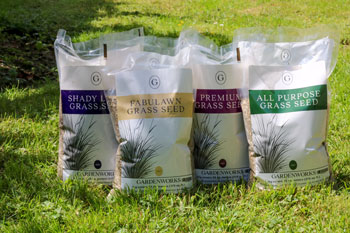 Type of grass
Type of grass
It’s important to choose a grass seed suitable to your region. GARDENWORKS carries 5 blends formulated by a “Blue Label” grass seed supplier in Vancouver. These grass seed blends are specially formulated for our climates, that cover a variety of needs.
Fabulawn is a superb blend of Perennial Ryegrasses, Chewing Fescues, Creeping Red Fescues and Kentucky Bluegrass to give your lawn a deep blue green hue. The finest of our grass blends, does well in full sun and is perfect for a lawn you want to showcase. However, Fabulawn is a little “hungrier” for nutrients but will reward you (handsomely) with a beautiful lawn.
Premium Lawn is our most popular turf seed, almost identical to Fabulawn but without the Kentucky Bluegrass. Perfect for the Front Lawn without the extra demand for fertilizer. Like Fabulawn, it does best in full sun with regular watering.
For a quality lawn that is durable and not too demanding, our All Purpose is the perfect choice. A mix of Perennial Ryegrass and a Creeping Red Fescue to help it regenerate and “knit” (meaning to cover by spreading), All Purpose is not as fine bladed as the others but is perfect for areas that don’t require a “bowling green” look. Durable and low maintenance.
Shady Lawn is also a very popular blend, since it’s perfectly blended for those areas that get less sun. Bear in mind this grass does not prefer the shade, it is just more tolerant of it. So, it’s the perfect choice for half shade and half sun.
Easy Grow is a drought tolerant blend suitable for drier climates like the Okanagan. A mix of three different fescue grasses (which require less water to stay green), plus a hardwearing perennial ryegrass. You'll be watering and mowing less to maintain this lawn.
Finally, if you are looking for a grass seed that is quick to germinate and you’re not too fussy about the overall thickness of the blade, our Rapid Patch will be just what you are looking for. Having a slightly courser nature, it’s advised to overseed the areas adjacent to the patch, so your newly seeded area will blend with the surrounding grass. This is always a great practice, when seeding. Unless you started with one of our mixes, they always look a little different so always “feather out” from where you are seeding.
 Fertilizing
Fertilizing
Turf grasses are by far the hungriest of the plants in your garden. We recommend the first application of a balanced lawn fertilizer around mid April when the grass will be starting to show signs of life after the cool of winter with GARDENWORKS Premium Lawn Food 14-4-8.
Come June, change over to GARDENWORKS Fabulawn 23-3-23, which has the right balance of nutrients for the summer season. The higher Nitrogen charge will give your lawn a deep green hue and extra Potash supports the lawn’s drought and disease tolerance as summer approaches.
The third application should be GARDENWORKS Fall Fertilizer 10-4-24, perfect to support the turf as it goes into its dormant phase.
Watering
Note: please be aware of any Watering Restrictions in effect within your region.
Lawns also need water to keep looking top notch and healthy throughout the season. As the rains abate, it’s important to water deeply, infrequently as opposed to watering shallowly, frequently. However, this can vary depending on your soil type. It’s always recommended to check the water content of your soil after you have irrigated. For example: after turning off your sprinklers for a typical watering, make a small hole in your lawn to determine how far the water has penetrated. The soil should be moist at least 3–4 inches down after watering.
A GARDENWORKS Moisture Meter is a great gadget for testing this area too.
Remember, sandy soils dry out faster than heavy soils. My suggestion: Water for 30–40 min twice a week. You can check the water coverage by placing an empty tuna can on the lawn to catch the water. When the can is filled the soil below your lawn should be moist enough.
In the Okanagan. lawns do best with deep, infrequent waterings, not daily shallow ones. Lawns need an inch of water a week to maintain in summer; watering infrequently a half inch at a time forces roots to travel deep in search of moisture. This results in a more robust turf that is better able to withstand the heat.
Remember, a hot windy day will dry out your lawn ahead of your planned schedule. Keep this in mind when considering your watering needs.
Moss, Weeds and Pests
The lawn enthusiast’s nemesis are moss and weeds. Moss is caused by a number of factors which you may or may not be able to remedy.
- Acid soils. Our high rainfall on the coast leaches the calcium from our soils, leaving them acidic. Applying Dolomitic Lime in the Spring and Fall should remedy this drop in pH. It also replaces the Calcium and Magnesium the lawn needs. Remember, lime does not remove moss, it just makes the soil less inviting to the moss. If you do have moss growing in your lawn we recommend swapping that first feed of GARDENWORKS Premium Lawn Food 14-4-8 with a Moss Control, then following that, a week later with Lime.
- Moss loves the shade. If you can, remove some of what is causing the shade. This is not always an option but something to consider. If you do have shade, overseed with GARDENWORKS Shady Lawn seed.
- Compaction, a lawn with lots of traffic is susceptible to moss growth. The quick remedy is to aerate. If you have a small lawn, a hollow tine aerator is the right tool. A larger lawn may require a power aerator. These devises remove soil plugs from the lawn, allowing air to penetrate easier. Following this with a good quality top dressing is always advised. This prevents the holes from closing up again, which happens rapidly when the lawn gets traffic. GARDENWORKS Top Dressing and Lawn Soil has been triple sifted to ensure a debris free, easy to spread blend of peat, washed sand and soil for this purpose.
 Weeds
Weeds
The most efficient way to remove weeds is to remove them by hand, we reommend the GARDENWORKS weeder with fulcrum.
Another way to discourage weeds is to overseed. This helps choke out existing weeds and prevents weed seeds from germinating due to competition for resources.
Pests
The most serious lawn pest to invade our region in recent years is the European Chafer Beetle*. The beetle (adult) does a fair amount of damage when eating leaves and flowers in June when they fly, but the larva, after emerging from their eggs, cause a lot of damage to grass roots under the soil. Lawns infested with this critter can go from a perfect green to a patchy mess in no time. Adding insult to injury, is the fact that the crows, skunks and racoons that feast on these fat grubs, make a mess of the lawn while foraging.
The best treatment for this pest is applying nematodes in mid July when the larva is at its most vulnerable. This product, GARDENWORKS Lawn Guardian, is a biological control that has gained huge popularity due to its efficacy on turf around the Lower Mainland from New Westminster to Burnaby and beyond.
Click here for more information on the European Chafer Beetle.
Visit the below links for regional information by city.
Please note that information contained within these links is updated yearly.
*Note, the European Chafer Beetle is not an applicable pest to the Okanagan region.
A new biological control that appeared on the market last year, is Scott’s Grub-be-Gone Max, which is Bacillus thuringiensis subsp. galleriae. This is a bacterial control and needs to be ingested by the grub to be effective. Conversely. nematodes search out the grubs in the lawn and go to work destroying them immediately. For better control, we would recommend a combination of these 2 remedies as they have different approaches to control which would work very well symbiotically.

